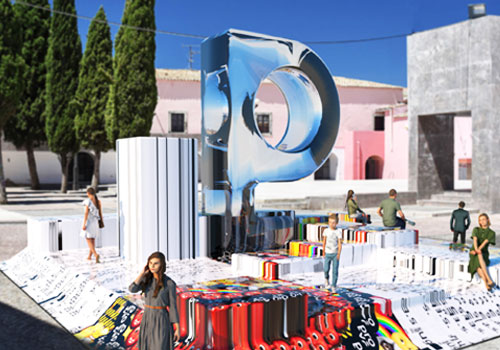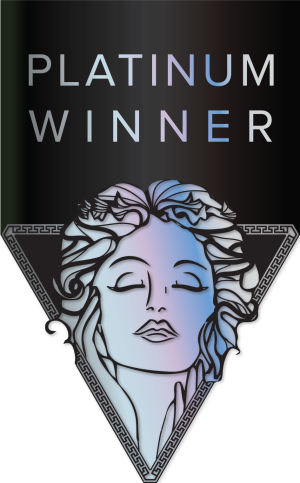
Interview
Ruiqi Zhou
United States
Ruiqi Zhou, a multidisciplinary designer based in New York, boasts a solid foundation in visual communication, strategy, and copywriting. Graduating from the renowned ArtCenter College of Design, he has gone on to collaborate with esteemed design firms like Gretel and Sunday Afternoon.
1 Please give us a brief bio of yourself and your creative background.
I'm a multidisciplinary designer based in New York with a strong background in visual communication, strategy, and copywriting. I graduated from the prestigious ArtCenter College of Design, and since then, I have collaborated with renowned design companies such as Gretel and Sunday Afternoon. My work has received international recognition, including the Muse Creative Award, TDC award, and Communication Arts Award of Excellence.
2 What made you become/why did you choose to become a creative?
My passion for storytelling and problem-solving led me to become a creative. I realized that design is a powerful tool to communicate ideas and create meaningful experiences, which inspired me to pursue a career in this field.
3 Tell us more about your business/company, job profile, and what you do.
Currently, I work as a graphic designer at Sunday Afternoon. As our company is relatively small, I am involved in various types of projects, such as 3D, animation, typography, and creative programming.
4 What does “creativity” mean to you?
To me, creativity is the ability to think outside the box, challenge conventional wisdom, and find innovative solutions to problems. It is a continuous process of exploration, experimentation, and iteration that leads to unique and impactful results.
5 To you, what makes a “creative” idea and/or design?
A creative idea or design is one that successfully combines originality, relevance, and effectiveness. It should not only be visually appealing but also convey a clear message and evoke an emotional response from the audience.
6 Tell us about your creative and/or design process.
My design process usually starts with research and strategy, where I analyze the problem and gather insights to define the project's objectives. I then brainstorm and develop concepts, experimenting with various visual and textual elements to create a cohesive and compelling narrative. After refining the design, I collaborate with the team to ensure that the final output meets the project goals and exceeds the client's expectations.
7 What's your favorite part of the creative process and why?
My favorite part of the creative process is the ideation stage, where I explore different possibilities and experiment with various ideas. This phase allows me to push my creative boundaries and discover new ways to solve problems and convey messages effectively.
8 Describe your creative style and its main characteristics.
My creative style is a combination of bold visuals, strategic thinking, and compelling storytelling. I strive to create designs that are not only aesthetically pleasing but also communicate a clear and powerful message, resulting in memorable and engaging experiences.
9 Do you think your country and its cultural heritage has an impact on your creativity process?
Definitely. My cultural heritage provides me with a unique perspective and a rich source of inspiration that influences my creative process. It has shaped my understanding of aesthetics, symbolism, and storytelling, which I incorporate into my work.
10 Congratulations! As the winner of the 2023 MUSE Creative Awards, what does it mean to you and your company and team to receive this award distinction?
Thank you! Winning the 2023 MUSE Creative Awards is a great honor and a testament to the hard work and dedication of our team. It serves as a validation of our commitment to excellence and innovation, and it motivates us to continue pushing the boundaries of design and creating impactful solutions for our clients.
11 Can you explain a bit about the winning work you entered into the 2023 MUSE Creative Awards, and why you chose to enter this project?
The Provo project is a typical example of combining creative programming and branding. First, we had an insight into the current widespread use of AI and then considered how to express my viewpoint through design. Once we decided to use the concept of CAPTCHA, it was only natural to implement it through programming design.
12 What was the biggest challenge with this project?
There were two main challenges with this project. First, we encountered many unexpected issues in programming, but ChatGPT helped us resolve some of the technical bugs. On the other hand, balancing a visually powerful typeface system with a relatively quiet and informational approach was difficult. This required thorough consideration of the arrangement of elements.
13 How has winning an Award developed your practice/career?
Winning the MUSE Creative Award has provided me with valuable recognition and exposure within the design industry. It has helped me to build credibility, expand my network, and attract new clients and collaborators. The award has also served as a reminder of the importance of continuous learning and innovation in my practice.
14 What are your top three (3) favorite things about our industry?
The opportunity to work on diverse projects and solve complex problems through design. The collaborative nature of the industry, allowing us to learn from and work with talented professionals from various disciplines. The constant evolution and advancement of design tools and technologies, which enable us to explore new creative possibilities and push the boundaries of our work.
15 What makes your country specifically, unique in the creative industry?
The creative industry in the United States is characterized by a strong emphasis on innovation, diversity, and collaboration. The country's rich cultural heritage and its unique blend of artistic, technological, and entrepreneurial influences make it a fertile ground for creativity and groundbreaking ideas.
16 Where do you see the evolution of creative industry going over the next 5-10 years?
I believe that the creative industry will continue to evolve and adapt to new technologies, such as artificial intelligence, virtual reality, and 3D printing. These advancements will lead to new design approaches and methodologies, as well as increased integration between design, technology, and business. Furthermore, the focus on sustainability and social impact will become even more important, driving the industry to create more responsible and meaningful solutions.
17 If you were a student entering this industry or an aspiring MUSE Creative Awards submitter, what advice would you give them?
Stay curious and open-minded, always be willing to learn and embrace new tools and technologies. Cultivate a strong work ethic, and don't be afraid to take risks and challenge conventional wisdom. Finally, believe in the value of collaboration, as working with others will help you grow and develop as a creative professional.
18 What resources would you recommend to someone who wants to improve their skills in the creative industry?
I would recommend exploring online platforms like Skillshare and Coursera for courses and tutorials on design, technology, and business. Additionally, attending conferences, workshops, and networking events can provide valuable insights and connections. Stay up to date with industry news and trends by reading design blogs, magazines, and books.
19 Tell us something you have never told anyone else.
I secretly dream of one day opening a design-focused bed and breakfast, where creatives from all over the world can come together to collaborate, learn, and recharge in a beautiful and inspiring environment.
20 Who has inspired you in your life and why?
My parents have been my greatest inspiration, as they have always encouraged me to pursue my passions and taught me the value of hard work, determination, and resilience.
21 What is your key to success? Any parting words of wisdom?
My key to success is a combination of curiosity, persistence, and adaptability. Embrace change, be open to new ideas, and never stop

